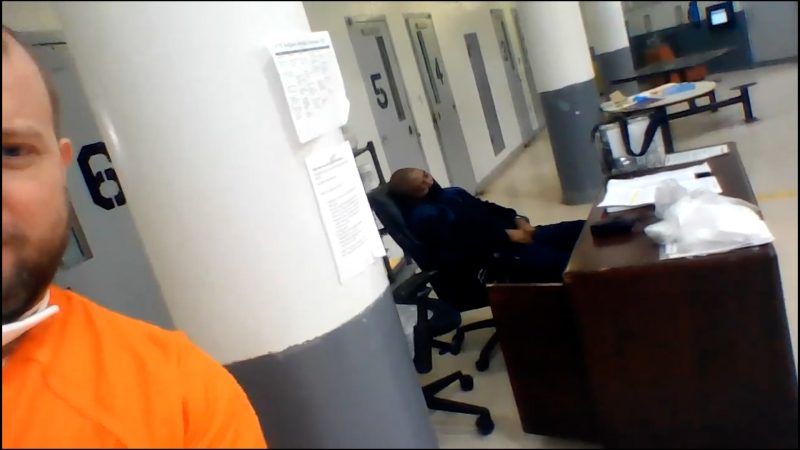Body:
It’s an interesting scenario that throws the spotlight on the state of security and surveillance at the U.S Capitol Jail, as a video surfaced recently from an unlikely source; a defense attorney for a Jan. 6 defendant. The video in question is reported to include footage of a D.C jail guard fast asleep during the duty hours. This spectacle raises concerns about the safety of the prisoners, security protocol compliance, and professionalism within the jailhouse.
The attorney who revealed this footage is representing a client involved in the Jan. 6 Capitol riot case. As one of the defense measures, the attorney is seemingly introducing broader inquiries regarding the conditions and security oversight in the jail. This methodology not only represents a unique strategy for the case at hand but could also potentially shift the narrative and changes the conversation around the defendant.
The video footage, reportedly captured by the attorney during a visit to the jail, is said to vividly showcase the guard in a state of slumber. While the video’s legal implications could be far-reaching, it also holds a mirror to the jail’s internal operations and management, making it clear that there may be lacunae needing immediate attention.
If claims are substantiated, this scenario essentially demonstrates negligence on the part of the jail administration. A sleeping guard could potentially compromise the security of the facility, posing potential safety threats to both the inmates and the staff. Hence, this incident could be viewed from both a legal and an administrative perspective with wide-ranging implications.
Moreover, the attorney’s move to publicly disclose the video subtly raises questions about the due diligence practiced by the jailhouse administration. This statement not only acts as a spotlight on one sleeping guard, but also implicitly suggests the possibility of a systemic issue within the institution.
It’s worth noting that this incident has garnered considerable attention and has sparked debate on multiple fronts. From the ethical boundaries of the defense attorney in releasing the footage, to the operational protocols within the jailhouse, to the government’s handling of the January 6th defendants – the incident opens a Pandora’s box of questions.
Looking at this incident on a larger scale, it significantly underscores the need for increased transparency, responsibility, and accountability within correctional facilities. It highlights the indubitable responsibility of ensuring that the security personnel remains vigilant at all times to maintain the sanctity and safety of the jail.
In a broader perspective, this incident opens a new avenue for discussion on the necessity and urgency for rigorous guard training, foolproof supervisory systems, and stringent measures






























